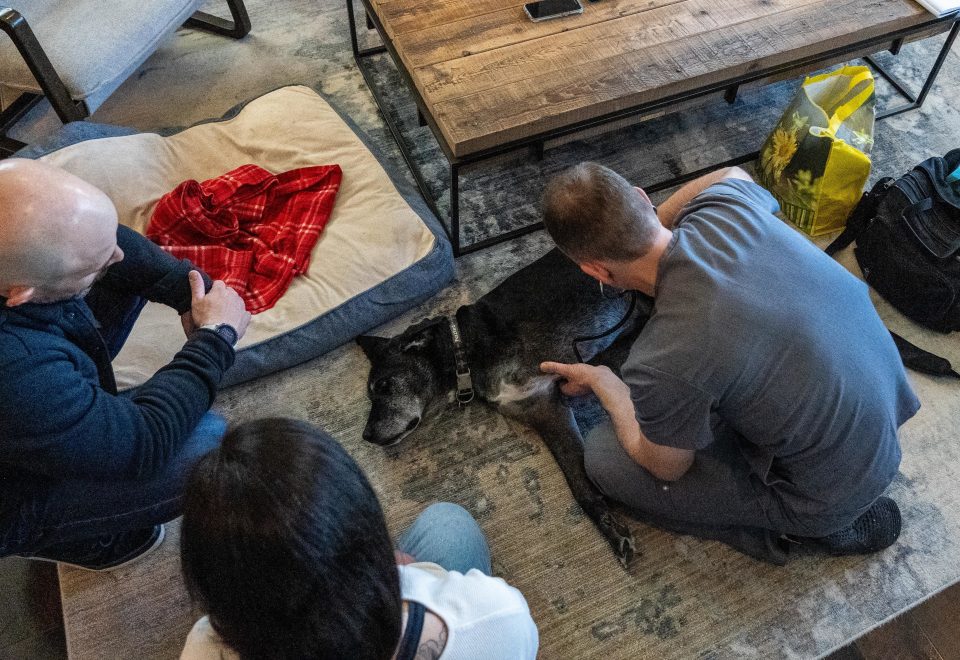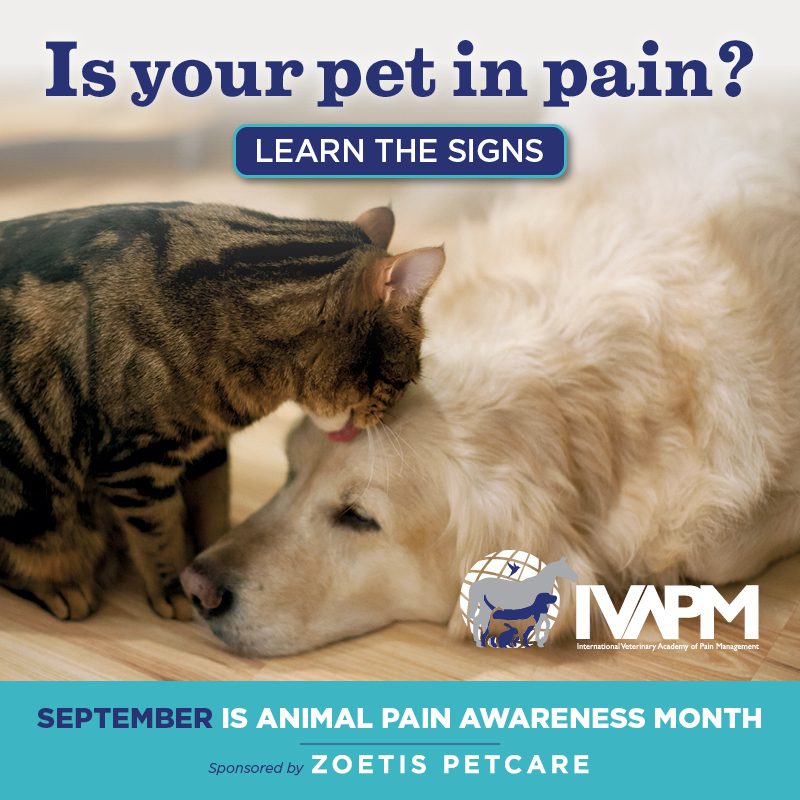The dreaded end-of-life discussion about our Tripawd is something we hope to avoid for many years. When we sense that it’s time, today’s guide by veterinarian Tyler Carmack, Director of Hospice and Palliative Care for Caring Pathways in Virginia, can gently guide the conversation. We are so grateful the time she took to write this article for our community.
Making Informed Decisions: Euthanasia and Quality of Life for Three-Legged Pets

Making decisions about euthanasia for our beloved pets, especially those with unique challenges like being tripods, can be one of the most difficult scenarios we face as pet lovers. Whether your furry friend is a dog or a cat, understanding their Quality of Life (QoL) and managing chronic pain are crucial aspects to consider. Here’s a guide to help you navigate this sensitive journey with care and informed decision-making.
Step 1: Understand Quality of Life (QoL)
The term “Quality of Life” refers to your pet’s overall well-being beyond physical health. Quality of life encompasses factors like mobility, appetite, behavior, and emotional state.
Utilizing QoL tools like the OSU QoL Scale (see page 7), the Midtown Mobile Veterinary Hospice Services QoL Scale, or the Lap of Love QoL Scale can assist families in assessing their pet’s QoL systematically.
These scales often include questions about your pet’s daily activities, enjoyment of life, and comfort levels. They help you gauge their QoL more objectively.
Sometimes a simple blank daily calendar is also helpful for tracking good and bad days.
Find the Right Pet QoL Tools for You and your Tripawd
No one scale is perfect. I encourage families to look at each and decide which one they feel will be best for their pet and their family.
All of these tools can be utilized early in the caregiving process to help track response to medication changes. They help families to get a feel for what is normal for their pets.
At the end of life, we can often see “bad” becoming normal. Tools like these allow us to recognize the decline sooner rather than later.
What is Your Quality of Life Like?
The caretaker’s Quality of Life must also be considered in our Tripawd’s end-of-life decision-making.
Many pet families are willing to go to any extreme to make their pets more comfortable. However, such a high pet caregiver burden can place strain on mental health and family relationships. It can also strain the human-animal bond we share with our Tripawd.
Having open and honest conversations with your veterinary team will allow care plans to fit within your family’s financial, time, physical, and emotional budgets of care.
Anticipatory grief (emotions felt in anticipation of euthanasia or death) can also substantially contribute to caregiver burden. Receiving support through pet caregiver groups and even dedicated anticipatory grief groups can help families understand the emotional process they are going through. This may allow them to continue caregiving at a higher level for longer or make decisions differently.
Anticipatory and Caregiver Support Groups
Step 2: Assess Chronic Pain’s Impact on Your Tripawd’s Quality of Life

Chronic pain can significantly impact your pet’s QoL. This is especially true for three-legged animals who may experience additional strain on their remaining limbs and joints.
The BEAP Chronic Pain Scales are valuable tools used by veterinarians to evaluate pain intensity and its effect on daily activities.
Monitoring your pet’s pain levels regularly can provide insights into how well their pain is managed and whether adjustments to their care are needed.
Chronic pain is demonstrated very differently than acute pain. Symptoms can often be subtle or attributed to “just getting older.” In many scenarios, the best way to diagnose chronic pain is to treat the pet. Then see if any improvements in their QoL are noted.
Consult with Palliative Care Veterinary Professionals
Palliative care veterinarians specialize in enhancing QoL for pets with chronic conditions, offering expertise in pain management and end-of-life care. Seeking their guidance can be pivotal. They can provide personalized advice based on your pet’s specific needs and condition progression.
Discussing your pet’s QoL assessments and pain scale scores with them can help clarify treatment options, including the timing of euthanasia, ensuring it aligns with your pet’s comfort and well-being.
No providers in your area? Try virtual services.
What if you do not have dedicated hospice and palliative care providers in your area? Then you can have consultations with virtual teleadvice services dedicated to end-of-life care. For example, you can try:
Step 3: How to Know When It’s Time to Say Goodbye
Ultimately, the decision to euthanize a pet is deeply personal to each family and should consider all factors:
- the pet’s physical health
- emotional well-being
- and ability to enjoy life, alongside the family’s QoL while caretaking.
When using QoL and pain scales, remember that they serve as tools to support your decision-making process. They will not give definitive answers. One of the biggest benefits of utilizing assessment tools is that they help facilitate more frequent and proactive consultations with the veterinary team.
Trust your observations as a pet caregiver and rely on the guidance of veterinary professionals who understand your pet’s unique circumstances.
Don’t Wait too Long
One of the most common regrets that in-home euthanasia services hear when speaking to pet families is that they feel like they waited too long with a previous pet.
We see a trend in that families tend to make euthanasia decisions earlier for each pet that they go through end-of-life care with.
Planning for and avoiding an emergency euthanasia or death can become a very important part of end-of-life decision-making, depending on the pet’s diagnosis and the trajectory of the disease. Working with your veterinarian to prioritize the type of death you want your Tripawd to have. This can impact your decision-making process throughout the journey.
Conclusion: Prioritize Your Tripawd’s Comfort and Dignity
Navigating euthanasia decisions for all pets involves compassion, understanding, and a commitment to their well-being.
Three-legged pets have even more physical strain on themselves and oftentimes their caretakers. By utilizing QoL scales, assessing chronic pain, and consulting with palliative care experts, you can make an informed decision that prioritizes your pet’s comfort and dignity.
Remember, you are not alone in this journey.
Reach out for support from veterinary professionals and fellow pet owners who have faced similar challenges.
In honoring quality of life for our three legged (and four) legged pets, we show them the love and care they have given us throughout their lives. We ensure their final moments are filled with peace and surrounded by the love they deserve.
 Join the forum discussion on this topic!
Join the forum discussion on this topic!